2019 Summer Scholars Independent Research Fellowships Announced
The University Scholars Program and the Office of Undergraduate Research and Fellowships are proud to announce the winners of this year’s Summer Scholars Independent Research Fellowships, the university’s most robust award for students taking on research and creative projects requiring the greatest degree of independence and sophistication. With the support of the SSIRF, 39 students will report on the state of journalism at the US/Mexico border, survey the anesthesiology capacity of rural Ugandan hospitals, compose music that complicates our perception of virtual reality environments, contribute to the development of non-opioid painkillers, and much more.
Our Summer Scholars participated in a semester-long series of project development workshops. Students interested in applying for one of our SSIRFs should keep an eye out for upcoming sessions in the fall.
Thank you to all of the mentors and congratulations Huskies!
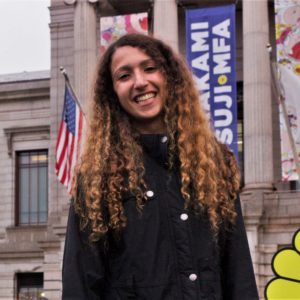 Spring: The Nourishing Power of Giving
Spring: The Nourishing Power of Giving
Awardee(s): Dania Abu Hussein CSSH ‘20
Mentor: Professor Rebecca Riccio, Public Policy and Urban Affairs, CSSH
My venture, Spring, is a fundraising, social-impact mobile application that connects people wanting to see change (donors) and change-makers (project-owners). Spring willl be first-of-its-kind in providing a platform that inspires donations and makes them effortless, efficient, and trackable. Today, no platform exists as a first-step resource for donors. Donors looking to donate are often lost in a sea of initiatives and struggle to find the right organizations they want to contribute to. Others only donate when a fundraising page conveniently shows up on their social media page. With no way of tracking their donation or its impact, both donor types are often quick to forget the human struggle behind these fundraisers. All together, this leads to a trend of infrequent donations that are often reactive rather than proactive in a process that isn’t worthwhile unless the intended donation is large enough. Spring seeks to eradicate these pain points by providing a user-friendly experience that makes constant donating, even in the smallest of quantities, a habit. In a world so interconnected, Spring will drive empathy and help establish a human connection that will stimulate action and facilitate social development. But like any start-up venture hoping to accomplish its mission, extensive market and customer research is required. So, for Spring’s first step, I plan to use this SSIRF to conduct extensive research on what specific incentives and user interface designs will best engage both donors and nonprofits, and then use my findings to design a user-centered Business Plan and Prototype.
 we are more than bodies
we are more than bodies
Awardee(s): Rosemary Ajegwu COE ‘21
Mentor: Professor Moya Bailey, Cultures, Societies, and Global Studies, CSSH
“we are more than bodies” is about third culture kids—children of immigrants who grew up in a place different from where their parents grew up—who are Queer, specifically looking at Nigerian Americans. Many of us try to hold onto as much of Nigerian culture as our parents can give us while living in America, but what happens when that culture seeks to kill us? Homophobia is steeped in Nigerian culture by way of religion and colonization. Carrying their conservative, colonial views on homosexuality over the Atlantic Ocean, immigrant Nigerian parents continue to practice homophobia as part of Nigerian culture and reject the acceptance of Queer people citing queerness as a “western” concept. Looking at the effects this has on Nigerian Americans who are already existing on the outskirts of two cultures, coupled with Queerness, “we are more than bodies” explores the internal, intergenerational, and familial conflicts cultural homophobia causes Queer Nigerian Americans through the multidisciplinary medium of digital collaging.
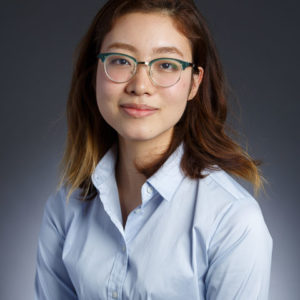
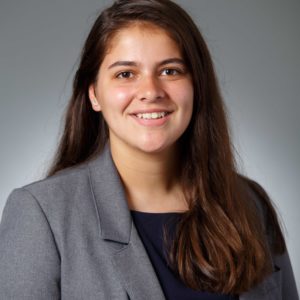
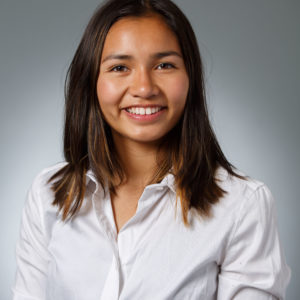 *Body Positivity and Corporate Social Responsibility in Tokyo, Japan
*Body Positivity and Corporate Social Responsibility in Tokyo, Japan
Awardee(s): Kanako Ando COS ’21, Francesca Giorgianni CSSH ’21, Elisa Danthinne COE ‘21
Mentor: Professor Rachel Rodgers, Psychology, COS
In the present proposal, we seek to examine the intersection of body image and Dove’s targeted corporate social responsibility initiatives in Japan in context of the larger conversation around self-image in Japan. Despite the widespread effects of thin-ideal imagery, previous studies on body image have been largely conducted in Western countries. Body image studies conducted in Japan focus on eating problems and eating distress and changes in weight status. To our knowledge, there has been no independent research conducted on the effects of beauty campaigns as they relate to body image perceptions in Japan.; The study is comprised of a mixed-methods research design which will collect both quantitative and qualitative data using interviews and surveys. We aim (1) to design and implement a survey with culturally relevant terminology that will examine body image and self-esteem among women aged 18-30 and (2) to obtain and analyze qualitative data on top-down perspectives on body image and self-esteem issues among companies marketing to women aged 18-30. A survey will be administered to quantitatively evaluate the effectiveness of a video created by the Dove Self-esteem and distributed to a Japan-based audience on changing body dissatisfaction levels in response to social media imagery. Additionally, semi-structured interviews conducted with stakeholders such as corporate representatives, associated professionals such as photographers and models, and end-users at the store level may help identify industry perceptions, initiatives, and cultural perspectives with regard to developing materials to mitigate body dissatisfaction in viewers.
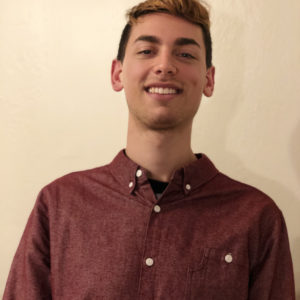 Emcee Meets Samurai: What Intersectional Fandom Can Teach us About Globalization and the Fluctuation of Identity Focusing on Japan and the United States
Emcee Meets Samurai: What Intersectional Fandom Can Teach us About Globalization and the Fluctuation of Identity Focusing on Japan and the United States
Awardee(s): Benjamin Averbuch CSSH ‘20
Mentor: Professor Rei Inouye, World Languages Center, CSSH
This research is an analysis of fan culture. By examining fans of Japnese hiphop in Japan and fans of anime in the United States, it will attempt to demonstrate what makes popular culture outside of one’s personal culture attractive to others. Hiphop and anime are both tied closely to ethnic groups (black America in the case of hiphop and Japan in the case of anime), which suggests that these art forms are inherently tied to particular experiences. The aim of this research is to determine how consuming media outside one’s particular experience has profound effects on identity formation. This research will consist primarily of interviews with fans that involve quantitative and qualitative data, which will be aggregated into an academic paper as well as a visualization available online. Through both of these components, the aim is to showcase the power of cultural storytelling in informing how international fans engage with the source material and how they identify themselves. This research speaks to the increasingly interconnected nature of popular culture, and how this can lead to a better understanding of foreign cultures and behavior. In essence, this research can speak to how humans interact and learn from one another through the art they produce.
 Dr. Brinsley
Dr. Brinsley
Awardee(s): Vidhan Bhaiya COE ‘21
Mentor: Professor Mark Sivak, Art and Design, COE
Diabetes is a major medical concern with over 400 million people suffering worldwide and increasing. Every 30 seconds, one foot is amputated due to diabetes in the world today (NIH). Half of these could have been prevented if people adhered to recommended footwear. However, adherence is extremely low because current footwear is expensive, ineffective and unsophisticated. Through two years of research in India, Italy and the US, we’ve designed a framework for designing diabetic footwear with no compromises. They combine medical performance with chic style and have been tested in multiple hospitals. Dr. Brinsley aims to educate diabetic patients about the need for diabetic footcare and become the go-to-brand for diabetics.
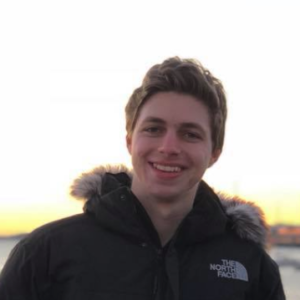 Mitochondrial Therapeutics for Ciprofloxacin Poisoning
Mitochondrial Therapeutics for Ciprofloxacin Poisoning
Awardee(s): Fausto Capelluto COS ‘21
Mentor: Professor Dori Woods, Biology, COS
My project involves exploring the use of mitochondrial transplantation to treat patients who have suffered mitochondrial damage as a result of ciprofloxacin poisoning. Essentially, some people who’ve been treated with this antibiotic suffer tremendous damage in both mitochondrial and nuclear DNA. What makes this situation even more lamentable, is that mothers can pass this mitochondrial damage to their children. We have been in contact with a woman who had this exact thing happen to her, and are extremely determined in helping out people like her. There are currently no treatments available for this condition. This project could lead to a change in that. Not only would the development of this mitochondrial therapy be a great help to those suffering from this illness, but it could also be applied to a vast amount of different conditions from Parkinson’s to plain Dementia.
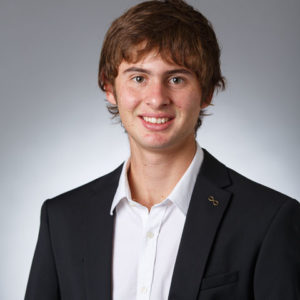
Computations in Derived Algebraic Geometry and Equivariant Cohomology
Awardee(s): Felipe Castellano Macias COS ‘20
Mentor: Professor Solomon Jekel, Mathematics, COS
This project will focus on doing calculations in the emerging field of derived algebraic geometry. We will focus on studying differential graded algebras and their global avatar, differential graded schemes. An example of such a calculation is to compute derived intersections, which capture possible non-transversality and which have been studied in the case of smooth subvarieties of smooth varieties; another is to find explicit presentations of derived moduli stacks of local systems on some explicit topological surfaces. We will investigate possible generalizations of these results to mildly singular varieties in both local and global settings. Another question involves studying circle-equivariant cohomology with rational coefficients and its relationship with differential graded algebras over a certain differential graded ring.
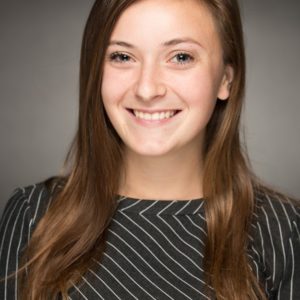 Hydrodynamic Properties of Room Temperature Ionic Liquids for Flow Batteries
Hydrodynamic Properties of Room Temperature Ionic Liquids for Flow Batteries
Awardee(s): Sofia Catalina COE ‘20
Mentor: Professor Joshua Gallaway, Chemical Engineering, COE
Energy storage remains a key issue in integrating renewable energy sources with the electric grid. Due to their intermittent nature, long-term, large-scale energy storage is needed to ensure grid stability, integrity, and dependability. Current battery technology cannot meet the cost and functionality targets necessary for this level of storage, but new chemistries and architectures are being developed to change this. In this SSIRF project, I research a visco-elastic non-Newtonian liquid electrolyte comprised of a non-aqueous quinone ionic liquid for flow battery applications as a part of Professor Gallaway’s Complex Electrochemical Systems Laboratory. To determine the functionality of this novel chemistry, I will establish the electrolyte’s liquid properties and build a prototype battery reactor to investigate electrolyte flow properties and optimize battery cell architecture. This battery chemistry could solve the performance and cost issues faced by existing battery technology and enable renewable energy to take the place of fossil fuels in our energy system.
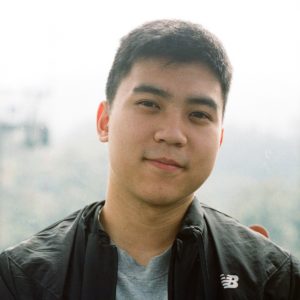 Low-Input Phosphoproteomics by Mass Spectrometry
Low-Input Phosphoproteomics by Mass Spectrometry
Awardee(s): Albert Chen COE ‘20
Mentor: Professor Nikolai Slavov, Bioengineering, COE
Dysregulation of cellular signaling pathways is the cause of many diseases, such as cancer. Protein phosphorylation is the primary mechanism in intracellular signaling, and this can be analyzed by measuring signaling networks’ constituent phosphoproteins. Our ability to study signaling pathways in low-input samples, however, is difficult; measuring many phosphoproteins comprehensively can only be done with a large number of cells, and low-input analyses are currently limited to measuring only a handful of phosphoproteins. To address this challenge, our lab has developed SCoPE-MS, a method that enables mass spectrometry analysis of low-input samples. Here I propose P-SCOPE, an adaption of SCoPE-MS for the analysis of protein phosphorylation. P-SCOPE allows for a comprehensive understanding of signaling pathways within those systems and provides a framework for studying more types of intracellular signaling, such as glycosylation and ubiquitination. Understanding, measuring, and exploiting these signaling networks with P-SCOPE pushes further the goal of precision medicine and personalized clinical treatments.
 Black Trans and Queer Organizing: The Role of Community Spaces During and After the Aids Crisis in DC
Black Trans and Queer Organizing: The Role of Community Spaces During and After the Aids Crisis in DC
Awardee(s): Blair Childs Biscoe CSSH ‘19
Mentor: Professor Nicole Aljoe, English, CSSH
This research project examines the relationship between black trans and queer space & activism and organizing in Washington, DC, comparing the 1980s to today. It is a continuation of a project started in the summer of 2018. My research was inspired by the innovative and vital use of space by black trans and queer individuals during the HIV/AIDS crisis in the 1980s and 90s, and particularly by a nightclub called the Clubhouse that evolved into one of the nation’s first black HIV/AIDS service organizations. In particular, the project hopes to identify the role of spaces in black trans and queer activism then (using HIV/AIDS as a focusing but not exclusive issue), and to then see whether spaces are being used similarly today. It examines many types of black trans and queer spaces, including social spaces, churches, support organizations, singular pop-up events and recurring events in homes. Through interviews with activists, organizers and space creators, research, and in-person observation, I am investigating this question. In the process, my research has raised insights about how gentrification, displacement, and the changing perception and treatment of HIV/AIDS have impacted the community and their spaces; and raised questions about how activism and organizing can be defined. This phase of my project will consist of analyzing the data I gathered last year and compiling it into a resource that can be used to educate members of the community and add to conversations about the potential of space in black trans and queer space activism and organizing.
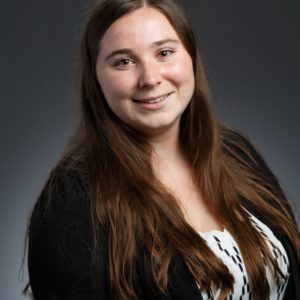 Elucidating the Interaction Between Ras and Two Ras-Binding Domains of Raf Kinase
Elucidating the Interaction Between Ras and Two Ras-Binding Domains of Raf Kinase
Awardee(s): Trinity Cookis COE ‘20
Mentor: Professor Carla Mattos, Chemistry & Chemical Biology, COS
Mutations in the master signaling protein, Ras, drive 20% of all human cancers and despite great efforts over many years, there are no drugs that target Ras. The signaling pathway that controls cell proliferation associated with tumor growth is mediated by the interaction between Ras and its effector protein Raf kinase. While drugs that disrupt this interaction have great potential to be effective against cancers, their development is hampered by the fact that it is not entirely understood how the two proteins interact at the molecular level. My project aims to solve the molecular structure of Ras in complex with the two Ras-binding domains of Raf kinase by X-ray crystallography. The structure will provide the necessary visualization and understanding of the interaction to target the Ras-Raf interface as a novel strategy for the treatment of the aggressive Ras driven cancers.
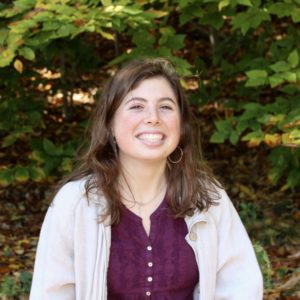 The Future of Farming: Understanding Water Transport and Distribution in a Perennial Polyculture
The Future of Farming: Understanding Water Transport and Distribution in a Perennial Polyculture
Awardee: Madeline DuBois COE ‘20
Mentor: Professor Amy Mueller, Civil and Environmental Engineering, COE
The growing threats to food security posed by climate change and an exponentially increasing population indicate that feeding the global population will be one of the greatest challenges of the 21st century. The practice of monoculture farming of annual crops that currently dominates food production wreaks a myriad of devastating consequences on the planet. Monoculture farming degrades the soil and is dependent upon unsustainable consumption of fossil fuels, harmful pesticides, and non-renewable fertilizers that run off and destroy ecosystems in natural water bodies. Food production also consumes the majority of global freshwater, which has serious future implications as water resources become increasingly stressed. The negative environmental impacts of monoculture farming cannot be understated, and it is imperative that more sustainable agricultural practices are adopted. Scientists at the Land Institute, a non-profit research organization in Kansas, are working to develop these solutions, which are contingent upon a transition from monocultures of crops that require annual replanting to perennial crops that naturally regrow, planted in polycultures of multiple species in the same field. However, the study of perennial polycultures is still in its infancy and further research is required to optimize and successfully implement this monumental shift in agriculture. It is particularly important to maximize water use in food production to conserve this precious resource, so during my co-op at the Land Institute I am leading a project investigating the transport of water through the soil and the distribution of water between plants in one of the most potentially promising polycultures.
 *An Assessment of the Stability of and Equity and Justice in the Fisheries Sector in Key West, Florida
*An Assessment of the Stability of and Equity and Justice in the Fisheries Sector in Key West, Florida
Awardee(s): Elisa Figueras COS ‘20
Mentor: Professor Steven Scyphers, Marine & Environmental Sciences, COS
Often, the voices of marginalized communities are left out of the conversation regarding fisheries management. It is largely undisputed in the scientific community that some kind of fisheries management is essential to preserve global fisheries, but the global fishing community is largely wary of new management schema, which often interfere with economic and commercial gain. Furthermore, many coastal fisherman worldwide depend largely or entirely on catches for sustenance, making management a social justice issue. Complicating matters further is the issue of climate change, which will untold and likely drastic effects on the distribution and size of fish and invertebrate species. Additionally, the world has an exponentially increasing human population and an increasing coastal population. Global fisheries provide a significant proportion of food to the world. Thus, effective fisheries management must account for more than the obvious ecological benefit; it must account for equity and justice for relevant stakeholders. This project will focus on assessing the stability of fish and invertebrates that are crucial to fisheries in Key West, Florida, as well as characterizing the state of environmental injustices in the sector.
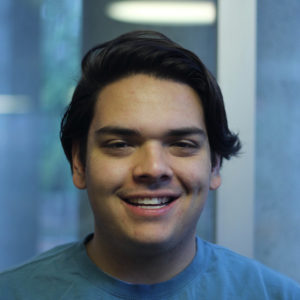 Unearthing the Dragon
Unearthing the Dragon
Awardee(s): Zakary Ganhadeiro COS ‘21
Mentor: Professor Erika Boeckeler, English, CSSH
During this project, I will be continuing to analyze the Dragon Prayer Book, Northeastern’s only medieval manuscript, to learn more about the books composition, construction, and provenance. The project will be separated into four different smaller tasks that will deepen our understanding of this manuscript: Raman and IR spectroscopy, Densitometry, and Palynology. Raman analysis uses photons to excite molecules which in turn release characteristic energy frequencies and patterns. By reading these emissions, the molecule can be determined which can help determine the composition of the inks in the manuscript. IR spectroscopy works in a similar manner by emitting IR frequencies. Inks set into the pages at different times in the manuscripts history appear different under these frequencies allowing for more accurate dating, and the possibility to see if any writing was added after the initial drafting. Densitometry is the study of light density and is carried out using a densitometer. The less translucent a page, the more dirt and dust it has collected and the more it was used. Using this principle I would be able to determine what prayers and pages were important to the manuscript’s original monastery. Using these results on the dirtiest pages, I will begin my experiment in palynology, or the study of pollen. Dirt samples will be collected from the manuscript as well as multiple regions in Germany, the proposed country of origin of the manuscript, and pollen counts of each will be made and compared to find which region’s biodiversity most resembles the manuscript’s
 *The Privatization of Social Housing in London as the Reproduction of Neoliberal Capitalism: An Urban History of Camden Council Estates
*The Privatization of Social Housing in London as the Reproduction of Neoliberal Capitalism: An Urban History of Camden Council Estates
Awardee(s): Ryan Grewal CSSH ‘21
Mentor: Professor Mohammad Shahid Alam, Economics, CSSH
I am writing an urban history of council estates in the London Borough of Camden from 1980 to the present. In 1980, council estates, the British equivalent of public housing projects, began to be privatized by being sold to the tenants. This was able to promote home ownership amongst the wealthier council tenants who were able to afford to buy their homes, but it also led many of these people to then sell or rent them. I think this could have had social effects on the estates by fragmenting once unified communities. This process of privatization has been described in Marxist theory as the economic reproduction of neoliberal capitalism. By interviewing estate residents I am trying to see if it also resulted in the social reproduction of neoliberal capitalism.
 Religion and Politics in Ethiopia
Religion and Politics in Ethiopia
Awardee(s): Leila Habib COS ‘19
Mentor: Professor Carie Hersh, Sociology and Anthropology, CSSH
In all three Abrahamic religions, Ethiopia is regarded as a site of importance. Due to the strong ties to the country, Ethiopians are seen as a faithful and “God-fearing” people, according to preliminary research conducted last summer. With all three religions present in the country, the relationships between the groups should be deeply studied. I will use interviews, participant observation and photographs to explore Christian-Muslim relations in Wollo, Ethiopia, a province regarded by many to be a prime example of these groups living peacefully. I will explore underlying dynamics of the communities, including the extent of religious harmony, parts of religious identity and practice that are altered to create the seemingly inclusive environment, spaces where coexistence or lack thereof manifest, and religion’s ties to nationalism.
 Losing the Race for Health: Racial Health Disparities in Rural America
Losing the Race for Health: Racial Health Disparities in Rural America
Awardee(s): Jared Hirschfield COS/CSSH ‘20
Mentor: Professor David Rochefort, Political Science, CSSH
The existence of a ruralurban health divide has been welldocumented in the public health literature for decades. However, the demography of rural America has largely been generalized as White and, as such, research exploring racial health disparities within rural spaces is relatively scant. In this project, I aim to elucidate answers as to why these racial health disparities exist and how we can mitigate their effects. My work will employ mixed methods: gathering qualitative data through travel to diverse rural areas and interviews with local rural health advocates, and analyzing quantitative data in the form of countylevel health outcome measures.
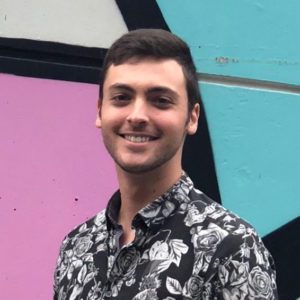 Development of a Muscle Synergy Based Algorithm for Predicting Muscle Activation with Implications for Prosthetic Control
Development of a Muscle Synergy Based Algorithm for Predicting Muscle Activation with Implications for Prosthetic Control
Awardee(s): Spencer Jacobs Skolik COE ‘22
Mentor: Professor Eugene Tunik, Physical Therapy/Movement/Rehabilitation Science, Bouvé
The concept of muscle synergies, or groupings of muscles that act as single unit to simplify control, has garnered attention for use in prosthetic control though numerous questions about implementation of this concept remain. This project seeks to develop a matrix factorization-based algorithm that will use synergies to predict the behavior of hand muscles from arm muscles that would remain after a wrist level amputation. The ability to predict the hypothetical behavior of amputated muscles solely from information about remaining muscles will allow for the future development of more intuitive and flexible prosthetic control schemes.
 Extension-Proof Compiler Verification
Extension-Proof Compiler Verification
Awardee(s): Dustin Jamner KCCS ‘20
Mentor: Professor Amal Ahmed, Computer Science, KCCS
Bugs in critical systems like mass transit or power grids can produce disastrous results. To eliminate them, organizations pour extensive effort into software verification. Unfortunately, this verified software must be translated to machine code by a compiler and if there are bugs in the compiler, as frequently occurs, it can emit faulty programs. To solve this problem, researchers verify the correctness of their compilers, ensuring that they work as expected. However, current compiler verification suffers from various limitations. Compilers usually consist of multiple passes, which translate the input program into progressively lower-level languages until it reaches machine code. Compiler-writers frequently want to reuse later passes by building a new top level pass. This enables programmers to write programs in a new language without requiring a whole new compiler from the source to machine code. Existing verification work focuses on a single chain of compiler passes. To add a new language to such compilers would require redoing all existing proofs to account for the addition. The objective of my project is to develop a framework for extension-proof verified compilers. When we add a new source language, nothing changes about the compiler beyond the first pass. We should be able to reuse the theorems we proved about the later passes to easily verify the whole chain for the new source language. Reusing passes in a new compiler greatly reduces the compiler writer’s work, so it ought to do the same when a developer verifies their compiler.
 How Do Drugs That Target the Cannabinoid System Modulate the Behavioral Actions of Fentanyl
How Do Drugs That Target the Cannabinoid System Modulate the Behavioral Actions of Fentanyl
Awardee(s): Andre Kirunda COS ‘21
Mentor: Professor Alexandros Makriyannis, Pharmaceutical Science, COS
There is a pressing need for new treatment approaches to safely and effectively counter opioid addiction. Extensive evidence suggests the existence of a functional (neurochemical, neurobiological, and pharmacological) interaction between the endogenous cannabinoid and opioid systems. Although such functional interactions between the cannabinoid and opioid systems raise the possibility that targeting cannabinoid receptors might be a useful approach for developing new medications for opioid addiction, limited information is currently available on the interplay between these two systems at the behavioral level. Thus, the overarching goal of this SSIRF is to utilize drug discrimination paradigms to determine how drugs (e.g., agonists or antagonists) targeting the cannabinoid system modulate the behavioral actions of the opioid fentanyl–considered to be the deadliest opioid drug in America by the US Centers for Disease Control and Prevention. Drug discrimination methodology will be used extensively to study the interoceptive stimulus properties of fentanyl that are thought to be closely related to their subjective effects in humans. Indeed, such stimulus properties of opioids have been proposed to play a key role in promoting the persistent use of opioids. The significance and impact of the proposed research is that it will expand our understanding of behavioral interactions between cannabinoid/opioid systems that may lead to the development of novel targets for countering the addictive properties of opioids.
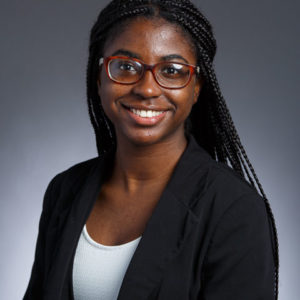

 Stroke Knowledge and Prevention Practices: A Comparative Study in Tokyo and Bangkok
Stroke Knowledge and Prevention Practices: A Comparative Study in Tokyo and Bangkok
Awardee(s): Adriell Louis COS ’21, Elizabeth Trauger COS ’21, Daem Celestin COS ‘21
Mentor: Professor Neil Maniar, Health Sciences, Bouvé
Strokes are a particularly salient healthcare issue in Japan and Thailand because of the growing aging populations. Although the stroke mortality rate is declining in Japan, the number of strokes is predicted to rise dramatically due to the accelerated aging of the population. This means that there will be an increase in the number of stroke survivors who need long-term, costly care. However, due to the decline in birth rate, there is a shortage of caregivers, which poses a major concern. The situation differs in Thailand where the stroke mortality rate is increasing. Therefore, the most urgent public health priority in both countries should be stroke prevention. One way to prevent strokes is through stroke awareness. If people can recognize stroke risk factors, signs, and symptoms, then they may be able to reduce their own chances of having a stroke, and they can have timely, appropriate responses in the event of someone else’s stroke. Our project seeks to 1) determine if there is a correlation between public stroke knowledge and stroke morbidity rates. 2) highlight the differences and similarities of stroke prevention measures between two countries with contrasting stroke morbidity rates. and 3) gain insight into healthcare professionals’ opinions regarding current stroke prevention measures. This understanding will help determine whether the healthcare needs of aging populations are being effectively met and how they could potentially be improved.
 Defined Elimination of Epitopes from the Allergenic Protein Ara h1 by the Modular Cloning Technique LAMA
Defined Elimination of Epitopes from the Allergenic Protein Ara h1 by the Modular Cloning Technique LAMA
Awardee(s): Shannon McCallan COS ‘20
Mentor: Professor Thomas Reinard, Chemical Engineering, Leibniz Universität Hannover
Food allergy is a growing public health concern, as more than 32 million Americans have a food allergy ranging from mild to life-threatening. This project aims to modify the most problematic allergen produced by the peanut plant, Ara h 1, by genome editing, in order to reduce its allergenic potential. So-called LAMA-cloning will be used to replace binding sites of the allergen. These modified proteins will be produced in bacteria. The proteins will then be exposed to sera from allergic and atopic patients, to measure the proteins’ allergy-inducing abilities. The hypoallergenic Ara h 1 engineered in this project may be used to produce hypoallergenic peanut plants. These plants may be safer for public consumption, and may be used to deliver hypoallergenic Ara h 1 in peanut oral immunotherapy. The system of protein modification developed in this project may be applied to other food allergens, such as tree nuts.
 Documenting Surveillance Strategies and Outbreak Prevention of Antibiotic Resistance in Greece
Documenting Surveillance Strategies and Outbreak Prevention of Antibiotic Resistance in Greece
Awardee(s): Hannah Meiseles COS ‘21
Mentor: Professor Veronica Godoy Carter, Biology, COS
Antibiotic resistance (AR), predicted to kill more people than cancer by 2050, occurs when a bacteria randomly acquires a mutation that allows for survival and reproduction even after the application of an antibiotic. This becomes an extreme problem, as the development of novel antibiotics often takes decades of research. Without regulation, doctors continue to prescribe antibiotics to patients, even if the body would fight off the infection naturally, which has caused outbreaks of AR to continue rising. This was shown particularly in Greece, where levels of antibiotic resistance were higher than any other European nation in 2015. While Greek policy has since been created to counteract the problem, the recent influx of refugees into the country could cause the issue to return again. New data has found that refugees have a 33% chance of acquiring infection along their journey or while living in an unsanitary camp, many of which exist in Greece and are hazardous environments due to a lack of budget for maintenance. Greece’s financial crisis becomes an even greater danger in the presence of disease control, and I want to try to understand and better educate others about the many different moving parts that surround the issue through the power of film. As the number of refugees globally continues to rise, we must be cognizant of what this means for the spread of antibiotic resistance, and how we can better prepare our healthcare systems in order to care for some of the world’s most overlooked individuals.
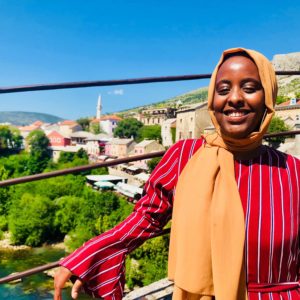 Evaluating CVE Programing in Boston and Minneapolis: Community Response and Engagement*
Evaluating CVE Programing in Boston and Minneapolis: Community Response and Engagement*
Awardee: Fatuma Mohamed CSSH ‘20
Mentor: Professor Nicole Aljoe, English, CSSH
Countering Violent Extremism programs, commonly known as CVE, are programs funded through the Department of Homeland Security (DHS), Department of Justice (DOJ) and the Federal Bureau of Investigation (FBI) in an effort to fight against radicalization in communities across the United States and abroad. CVE has become a hotly contested topic with those fighting against it saying that CVE is contributing to stigmatizing police strategies which have negative racializing effects. Some of those negative effects being that CVE reinforces the perception that Muslim communities are inherently violent and threatening. While supporters argue that CVE funded programs are giving the government and community members opportunity to team up in their efforts to fight violence. But five years after the conception of them have CVE programs obtained their objective goals? And what are the short term and long-term impact of these goals for the communities participating? What is the impact of having law enforcement agencies involved in organizations that provide social services support? This research looks to answer these questions by conducting interviews with organizations and individuals to discuss the impact CVE funded programs have had on their communities. For, the scope of this research, I am focusing on Boston and Minneapolis/twin cities because I am interested in exploring how CVE programing is impacting the Somali Community and Somali youth. While there is existing research on CVE and evaluation of CVE programs, research looking at the impact that it has or could potentially have on Somali youth is insufficient.
 Examining Hungarian Economic Convergence with Core EU Member States
Examining Hungarian Economic Convergence with Core EU Member States
Awardee(s): David Nica CSSH ‘20
Mentor: Professor Gustavo Vicentini, Economics, CSSH
My research project seeks to investigation whether Hungary’s 2004 accession to the European Union (EU) has helped it “catch up” to its more developed and wealthy western peers, such as Austria and Germany. “Convergence,” or the process of poor countries catching up to rich ones in their income and output levels, is thought by economists to be a natural by-product of globalization and economic integration. Additionally, due to the large inequality present among its member states, the EU distributes structural funds to lower-income economies to assist their development. My research will evaluate the effectiveness of these “cohesion funds” by examining their effect on Hungary on a regional level. By using region-level data, I hope to uncover any regional inequities in Hungary’s development process and receipt of EU funds. Furthermore, I will depart from the literature by using an indicator of social welfare such as the regional Human Development Index (HDI) rather than the traditional per capita income to measure “convergence.” I expect my findings to help Hungarian policy-makers understand the impact of EU funds on a regional level and the current state of the country’s development. Additionally, by critically examining the EU structural funds policy, this study will shed light on the EU’s success or lack thereof in integrating the Eastern bloc member states.
 Development of Transcranial Magnetic Stimulation-Based Biomarkers for Early Identification of Amyotrophic Lateral Sclerosis
Development of Transcranial Magnetic Stimulation-Based Biomarkers for Early Identification of Amyotrophic Lateral Sclerosis
Awardee(s): Nathaniel Pinkes Bouvé ‘22
Mentor: Professor Eugene Tunik, Physical Therapy/Movement/Rehabilitation Science, Bouvé
One of the largest impediments to the treatment of ALS is difficulty in diagnosing the disease at an early enough stage. When ALS is diagnosed early, pharmacological treatments can be started sooner in the disease progression and have greater impact. Currently, the time between first symptoms and diagnosis of ALS is about 20.5 months (Orsini et al., 2015). The aim of this project is to identify biomarkers of “split-hand” syndrome, a key feature of ALS that can be used to distinguish it from so called “mimic” disorders. A form of noninvasive brain stimulation called transcranial magnetic stimulation (TMS) will be used to map and characterize abnormalities in the muscle topography of the hand. This will serve as an early indicator of progression to split-hand allowing for earlier diagnosis of ALS.
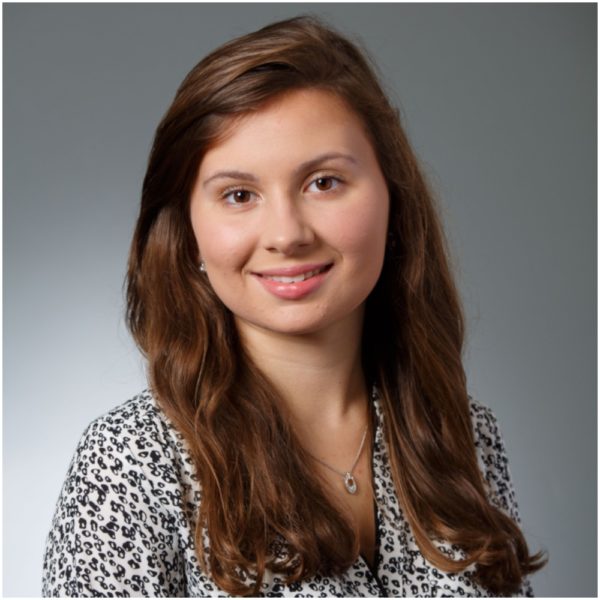 Understanding the Molecular Mechanics of Behavior in Response to Environmental Signals from Bacteria in C. elegans
Understanding the Molecular Mechanics of Behavior in Response to Environmental Signals from Bacteria in C. elegans
Awardee(s): Stephanie Stumbur Bouvé ‘21
Mentor: Professor Javier Apfeld, Biology, COS
Aging is a process that all humans undergo. It causes a progressive loss of tissue and organ function that can increase the risk of a variety of diseases including neurodegenerative disease, cardiovascular disease, and cancer. The development of these diseases is influenced by oxidative stress. Oxidative stress occurs when cells produce reactive oxygen species (ROS) that accumulate and damage macromolecules, leading to the dysregulation of crucial cellular pathways. Causes of oxidative stress can be internal due to cellular respiration or external due air and water pollution, tobacco, and alcohol. Using a simple model organism, the nematode C. elegans, to study the regulation of oxidative stress resistance and aging, this project is based on the key observation that worms can discriminate ROS-protective bacteria from bacteria that are not ROS-protective. I am studying the mechanisms by which the nematode C. elegans adjusts its behavior under oxidative stress in response to food-derived cues. The goal of this project is to better understand the molecular mechanics of C. elegans behavior in response to environmental signals from bacteria. Discovering how behavior and physiology are coordinated in C. elegans under oxidative stress will give us may give us a deeper understanding of how neurological diseases are associated with oxidative protein damage.

 The Economic Impact of Climate Change on Agriculture: Irrigation as an Adaptation Mechanism
The Economic Impact of Climate Change on Agriculture: Irrigation as an Adaptation Mechanism
Awardee(s): Isabella Ragazzi CSSH ’21 & Fizzah Shaikh COE ‘21
Mentor: Professor Amy Mueller, Civil & Environmental Engineer, COE
Our project aims to address the effects of climate change on agriculturally dependent economies. We will be creating a machine learning model to predict the economic impacts of climate change on coffee production in Ethiopia, specifically focusing on the Yirgacheffe region which is prized for its high-quality arabica beans. Our model will aggregate climate data and economic data to evaluate the impacts of large-scale irrigation, a potential climate change adaptation mechanism, on the Ethiopian coffee market. Through our research, we hope to add to the nascent literature on the use of machine learning for economic analysis and to create a framework for analyses of other climate resiliency measures.
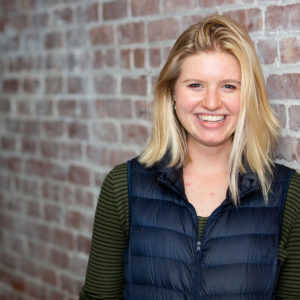 West from South: American Stories from the Southern Border
West from South: American Stories from the Southern Border
Awardee(s): Riley Robinson CAMD ‘21
Mentor: Professor Carlene Hempel, Journalism, CAMD
I plan to drive the length of the United States’ border with Mexico from Brownsville, Texas to San Diego, California, reporting on the condition of local journalism. I will interview local journalists and compare their border reporting and practices to what is published by national outlets. I’ll be reporting a series of written slice-of-life vignettes about journalists at these small publications, how they fit into their local communities, and what residents think the national media gets wrong about their narrative. I will couple my written recording with my own photojournalism, which will be presented in a multimedia web magazine.
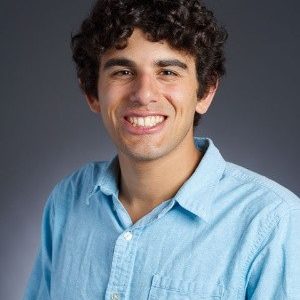 Audio and Content Quality Evolution in Music’s Digital Age
Audio and Content Quality Evolution in Music’s Digital Age
Awardee(s): Kyle Rossini DMSB ‘20
Mentor: Professor Doug Bielmeier, Music, CAMD
Music is changing. Everything from the lyrics being recorded by our favorite artists to the way we consume music on a daily basis is constantly evolving in an internet and data-driven world. With this has brought the rise of the independent artist in the music industry. The independent artist’s goal is to have autonomy over the entire production process of their music, embodying authenticity and creativity as the cornerstones of their craft. Understanding the transformation of the music industry has imperative economic, social, and technological incentives. As an avid music fan and consumer, analyzing this phenomenon is extremely interesting to me. For my Scholars Summer Independent Research Fellowship, I am going to step into the shoes of an independent artist and will write, record, mix, master, and publish a 5-track album. It will be distributed on streaming services following a promotion campaign. The experience will present challenges and lessons that will allow me to understand the independent artist experience in a unique and insightful way. Personal and professional development are also motivators to execute this endeavor, given my post-graduate and career plans. This SSIRF will also play a role in a larger project addressing the issue of a lack of resources available for independent artists to understand how to create a musical project from scratch. Taking the skills and insight from my experience during the SSIRF, I will produce a comprehensive guide taking aspiring musicians through the entire process of creating an independently produced musical work from start to finish.
 Songs and Thematic Elements in Virtual Reality
Songs and Thematic Elements in Virtual Reality
Awardee(s): Murray Sandmeyer KCCS ‘20
Mentor: Professor Ronald Smith, Music, CAMD
How immersive is Virtual Reality technology in its present form, and how do people perceive the virtual world? How can emerging VR applications inform musical composition? What is the relationship between human computer interaction, aesthetics, and art? These questions and many others come to mind as I approach the end of my program in Computer Science and Musical Composition at Northeastern. The idea of using a Head Mounted Display in order to experience a virtual world in three dimensions is something that has fascinated me ever since I began developing VR applications in 2018. Not only was the technology new and exciting, but artistic opportunities began to emerge; many painters and sculpture artists, for example, had begun to create and display 3D works of art in VR environments. As a musical composer, VR inspires me with regards to the possibilities for shaping the way people perceive music, either in terms of visual associations or spatial listening. My project with the Summer Scholars Independent Research Fellowship, as a result, aims to start a conversation about the way people listen to music and how their perceptions change across physical and virtual spaces. For this project I am creating a collection of music that could be heard with or without an accompanying VR environment. I hope to use music to illustrate what excites me about VR, and I hope to explore themes related to naturalness, acoustic sounds, and imagination.
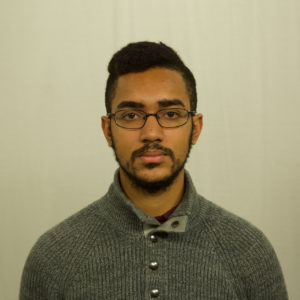 Visual Representation of Emotions in Music
Visual Representation of Emotions in Music
Awardee(s): Isaac Schutz CAMD ‘20
Mentor: Professor Kellian Adams Pletcher, Art and Design, CAMD
“Visual Representation of Emotions in Music” is a project centered around the creation of images based on musical works. The project involves the creation of five works of music by a game composer targeted at creating these mental images through the lens of the emotions: happiness, sadness, fear, surprise, and anger. Game artists then take those pieces of music and create artwork based on what they have heard, as well as a brief description of what in the sound lead them to create the images that they did. “Visual Representation of Emotions in Music” creates an opportunity to share how game music composers and visual artists separately and collaboratively create game worlds through their different art forms while also tying in the emotional aspects of video games.
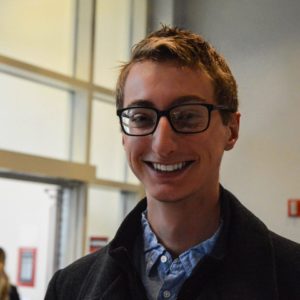 A Needs-Based Assessment of Medical Facilities in Rural Uganda in Partnership with MGH
A Needs-Based Assessment of Medical Facilities in Rural Uganda in Partnership with MGH
Awardee(s): Hugh Shirley COS ‘20
Mentor: Professor Richard Wamai, Cultures, Societies, and Global Studies, CSSH
This project will survey the anesthesiology capacity of the Mbarara hospital system in rural Uganda. The capacity for surgery, anesthesia, and obstetric care (SAO) is a powerful indicator for the health of a community. In 2015, the Lancet Commission on Global Surgery highlighted the importance of SAO for tackling the historically neglected burden of disease and disability that is treatable with access to quality, affordable surgical care. In response, Massachusetts General Hospital (MGH) established a partnership with the Mbrara University of Science and Technology (MUST) where they provide expertise and resources to improve the hospital system. Through this partnership, I will study anesthesiology capacity and write a report on the current state of SAO care in collaboration with MGH in order to advocate for the adoption of a Ugandan National Surgical, Obstetric, and Anesthesia Plan (NSOAP), one of necessary steps for improving health access and equity as outlined by the Lancet Commission on Global Surgery. The project will begin with a systematic review of the literature and available survey tools and culminate with a trip to Mbrara to conduct the data collection.
 Communicating a Model of the Quantitative Limits of Genetically-Encoded Ratiometric Sensors
Communicating a Model of the Quantitative Limits of Genetically-Encoded Ratiometric Sensors
Awardee(s): Julian Stanley COS ‘19
Mentor: Professor Javier Apfeld, Biology, COS
Cells can be genetically modified with fluorescent sensors that can be used to measure biologically-important characteristics such as pH, ATP, and redox potential. For example, a pH sensor may take one shape in acidic conditions and another shape in basic conditions and such changes will determine how brightly the sensor fluoresces. In some cases, sensors are used to discern large differences; they could be used to say that one cell is very acidic, while another is very basic. Increasingly, fluorescent sensors are being used to make quantitative measurements in cells; they could be used to say that the pH in a cell is 7.3. Due to the mathematical transformation between a measure of fluorescence and a biologically-meaningful value like pH, it is well-established that different sensors are better-suited to measure different environments. For example, one sensor might be best to measure low pH, while another is best at high pH. Over the last six months, I have developed a framework to definitively describe the suitability of quantitative sensors to measure values such as redox potential, pH, and ATP. I describe how, for example, one sensor may be able to measure values around pH 7 to an accuracy of 0.1 pH unit, but another may be accurate to 2.0 pH units. Through this project, I hope to work on communicating my findings to the scientific community. I will prepare a manuscript to submit for a peer-reviewed publication and build an online web application to improve the accessibility of the framework.
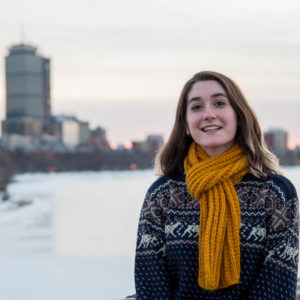 Comparing the Behavioral and Neuronal Mechanisms of Competitive Foraging in Groups of Male and Female Mice
Comparing the Behavioral and Neuronal Mechanisms of Competitive Foraging in Groups of Male and Female Mice
Awardee(s): Leah Strahs COS ‘20
Mentor: Professor Michele Jade Zee, Biology, COS
Competitive success within a group is crucial to both humans and animals, affecting quality of life and survival of an individual. Competitive success relies on intact social cognition, particularly in domains associated with understanding where individuals stand in a social dominance hierarchy. These processes are dysfunctional in psychosocial disorders such as Autism Spectrum Disorder (ASD), a disorder which presents differently in human males and females. Thus, understanding sex-based differences in competitive strategy and their neuronal underpinnings may provide insight into why psychosocial disorders such as ASD are sexually dimorphic. This study investigates similarities and differences between males and females in 1) competitive behaviors, and 2) neuronal encoding patterns during competitive foraging in the dorsomedial prefrontal cortex (dmPFC), a crucial area of the brain responsible for social decision-making. In this paradigm, groups of four familiar mice compete for a single food reward while we record extracellular single-neuronal activity from the dmPFC. Preliminary behavioral data has revealed that greater social dominance is directly correlated with greater competitive success, but only in groups of males and not in females. From preliminary neuronal recordings, we found a subset of cells in the dmPFC that selectively encoded the animals’ hierarchical rank, the order in which they accessed the reward zone, and the reward amount.
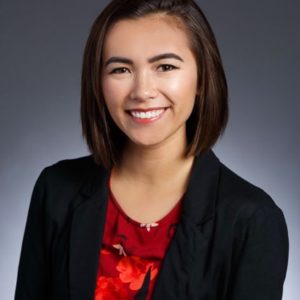 Using a Service Design Approach to Improve the Experience of Civic Participation
Using a Service Design Approach to Improve the Experience of Civic Participation
Awardee(s): Tia Thomson CAMD ‘20
Mentor: Professor Miso Kim, Art and Design, CAMD
The goal of this project is to demonstrate how a service design approach can be used to improve the experience of volunteers within a non-profit organization’s volunteer program and encourage sustained participation. Volunteer retention is a pressing issue for many non-profit organizations that depend on an active volunteer base, yet best practices for volunteer management are not widely adopted. Partnering with a local non-profit organization, I aim to implement service design’s user-centered methodology— a structured process that applies specific tools and methods to design improved services—to develop a tailored strategy for enhancing the volunteer experience to improve retention. I will then record the thoughts and opinions of volunteers and staff regarding this strategy to evaluate the strengths and limitations of a service design approach within this context. The service design process will be documented on a website to create an online guide to empower other non-profit organizations to implement the service design framework within their own programs.
* Pending IRB approvals.
